Your cart is currently empty!
Tag: Risks

The Role of Safety Protocols in Data Center Operations: Best Practices for Mitigating Risks
Data centers play a crucial role in today’s digital world, serving as the backbone for storing, processing, and distributing vast amounts of data. With the increasing reliance on data centers, it is essential to prioritize the safety and security of these facilities. Safety protocols are essential in data center operations to mitigate risks and ensure the smooth and efficient functioning of these critical infrastructures.One of the primary risks in data center operations is the potential for physical accidents and emergencies. This can range from fires, power outages, natural disasters, and equipment failures. Safety protocols help to prevent these incidents from occurring and provide guidelines on how to respond effectively in case of an emergency. By implementing best practices for safety, data center operators can minimize downtime, protect valuable data, and ensure the safety of their employees.
Some best practices for mitigating risks in data center operations include:
1. Regular maintenance and inspections: Regular inspections of equipment, power systems, and cooling systems are essential to identify potential issues before they escalate into emergencies. By conducting routine maintenance and inspections, data center operators can ensure the smooth functioning of their facilities and prevent unexpected downtime.
2. Fire suppression systems: Fire is a significant risk in data centers due to the high concentration of electrical equipment. Implementing fire suppression systems, such as sprinklers and fire extinguishers, can help to quickly contain and extinguish fires before they cause significant damage to the facility and data.
3. Access control and security protocols: Limiting access to data centers to authorized personnel is crucial for preventing unauthorized access and potential security breaches. Implementing access control measures, such as biometric scanners, key cards, and surveillance cameras, can help to enhance the security of data centers and protect sensitive information.
4. Disaster recovery planning: Data centers must have comprehensive disaster recovery plans in place to minimize the impact of natural disasters, power outages, and other emergencies. By developing and regularly testing disaster recovery plans, data center operators can ensure that they can quickly recover and resume operations in case of a crisis.
5. Employee training and awareness: Proper training and education for data center employees are essential for ensuring that they are aware of safety protocols and know how to respond in case of an emergency. Regular training sessions and drills can help to reinforce safety practices and ensure that employees are prepared to handle any situation that may arise.
In conclusion, safety protocols play a crucial role in data center operations to mitigate risks and ensure the smooth functioning of these critical infrastructures. By implementing best practices for safety, data center operators can protect their facilities, data, and employees from potential accidents and emergencies. Prioritizing safety in data center operations is essential for maintaining the reliability and security of these vital facilities in today’s digital age.
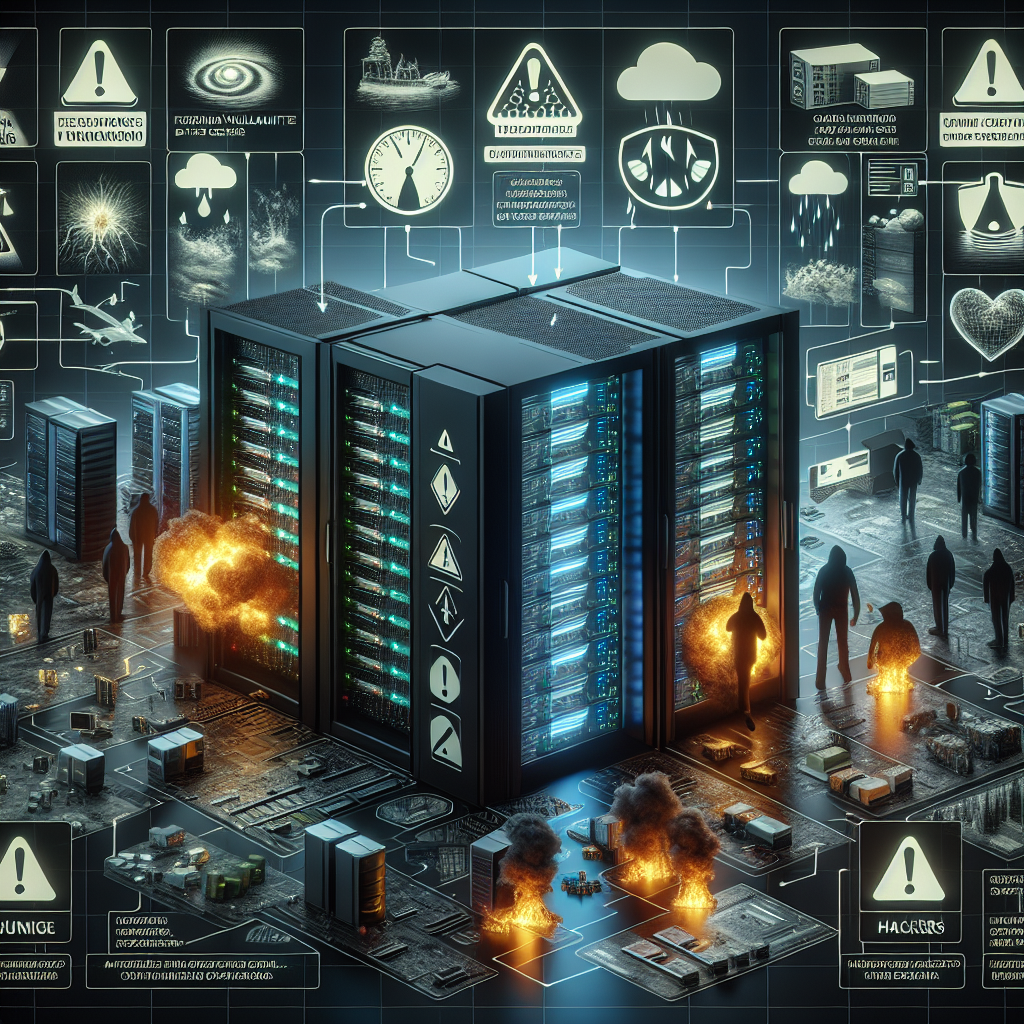
Assessing the Risks: Understanding the Vulnerabilities That Lead to Data Center Downtime
Data centers are the backbone of modern businesses, providing the necessary infrastructure for storing and processing vast amounts of data. However, despite their critical importance, data centers are not immune to downtime, which can have severe consequences for businesses in terms of financial losses, damage to reputation, and potential legal implications. In order to mitigate the risks of downtime, it is essential for businesses to understand the vulnerabilities that can lead to data center outages.One of the main causes of data center downtime is hardware failures. This includes failures of servers, storage devices, networking equipment, and other critical components that make up a data center infrastructure. Hardware failures can occur due to various reasons, such as manufacturing defects, wear and tear, overheating, power surges, or physical damage. To minimize the risk of hardware failures, businesses should invest in high-quality, reliable equipment, conduct regular maintenance and monitoring, and have backup systems in place.
Another common cause of data center downtime is human error. This can include mistakes made by data center staff during routine maintenance tasks, configuration changes, software updates, or troubleshooting procedures. Human errors can also result from lack of training, poor communication, or negligence. To prevent human error from causing downtime, businesses should implement strict protocols and procedures, provide adequate training and supervision for staff, and conduct regular audits and reviews of data center operations.
Natural disasters and environmental factors are also significant threats to data center uptime. Events such as earthquakes, floods, hurricanes, fires, and power outages can disrupt data center operations and cause extended periods of downtime. To mitigate the risks posed by natural disasters, businesses should implement disaster recovery and business continuity plans, locate data centers in secure and resilient locations, and invest in redundant power and cooling systems.
Cybersecurity threats are another major concern for data center operators, as cyberattacks can compromise the security and integrity of data stored in the data center, leading to downtime and data loss. Cyber threats can come in various forms, including malware, ransomware, phishing attacks, and denial-of-service attacks. To protect against cybersecurity threats, businesses should implement robust security measures, such as firewalls, encryption, intrusion detection systems, and regular security audits.
In conclusion, downtime in data centers can have serious consequences for businesses, making it essential for organizations to assess and mitigate the risks that can lead to data center outages. By understanding the vulnerabilities that can cause downtime, businesses can implement proactive measures to prevent and minimize the impact of downtime, ensuring the reliability and availability of their data center operations.
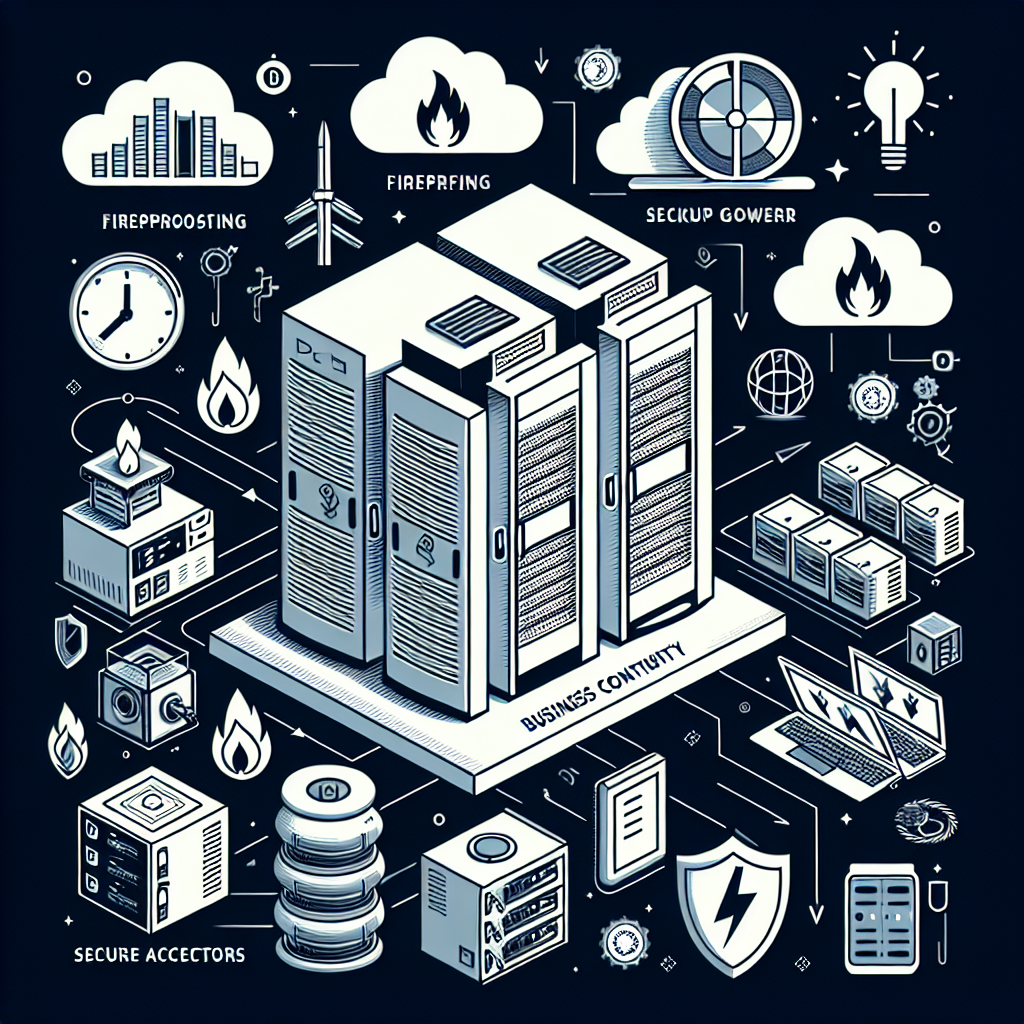
Safety Measures for Data Centers: How to Minimize Risks and Ensure Business Continuity
In the digital age, data centers play a crucial role in storing and managing vast amounts of information for businesses. As such, it is essential for organizations to prioritize the security and safety of their data centers to minimize risks and ensure business continuity. Here are some key safety measures that organizations can implement to protect their data centers:1. Physical security: One of the most basic yet critical safety measures for data centers is ensuring physical security. This includes implementing access control systems, surveillance cameras, and security guards to prevent unauthorized access to the facility. Organizations should also secure server racks and cabinets with locks to prevent tampering or theft of equipment.
2. Fire detection and suppression systems: Data centers house sensitive electronic equipment that is vulnerable to fire hazards. Implementing fire detection and suppression systems, such as smoke detectors, sprinkler systems, and fire extinguishers, can help prevent fires from spreading and causing damage to the data center.
3. Environmental monitoring: Data centers are susceptible to environmental factors such as temperature fluctuations, humidity levels, and water leaks. Regular monitoring of these environmental conditions can help prevent equipment failure and downtime. Organizations should invest in environmental monitoring systems to alert them to any potential issues before they escalate.
4. Redundant power supply: Power outages can disrupt operations and cause data loss in data centers. Implementing redundant power supply systems, such as uninterruptible power supply (UPS) units and backup generators, can ensure continuous power supply to critical equipment in the event of a power failure.
5. Regular maintenance and testing: Regular maintenance and testing of equipment and systems are essential to identify and address any potential vulnerabilities or issues before they escalate. Organizations should establish a maintenance schedule and conduct regular testing of backup systems, fire suppression systems, and environmental monitoring systems.
6. Disaster recovery plan: In the event of a natural disaster, cyberattack, or other unforeseen events, organizations should have a comprehensive disaster recovery plan in place to minimize downtime and data loss. This plan should outline procedures for data backup and recovery, communication protocols, and alternative workspaces for employees.
By implementing these safety measures, organizations can minimize risks and ensure business continuity in their data centers. Prioritizing the security and safety of data centers is essential to protect sensitive information, maintain operational efficiency, and safeguard the reputation of the organization.

Mitigating Risks in Data Center Operations: A Focus on Incident Management
Data centers play a crucial role in the digital age, serving as the backbone of organizations’ IT infrastructure. With the increasing reliance on data centers to store and process large amounts of data, it is essential for businesses to prioritize the mitigation of risks in data center operations.One key aspect of risk mitigation in data center operations is incident management. Incidents such as power outages, hardware failures, and cyber-attacks can have a significant impact on the availability and security of data center services. Therefore, having a robust incident management process in place is crucial to ensuring the smooth and uninterrupted operation of the data center.
There are several best practices that organizations can follow to effectively mitigate risks in data center operations through incident management. Firstly, it is important to have a comprehensive incident response plan in place. This plan should outline the steps to be taken in the event of an incident, including how to identify, assess, and respond to the incident in a timely and coordinated manner.
Additionally, organizations should regularly conduct risk assessments and audits to identify potential vulnerabilities in the data center environment. By proactively identifying and addressing these vulnerabilities, organizations can reduce the likelihood of incidents occurring and minimize their impact when they do occur.
Furthermore, organizations should invest in monitoring and alerting tools to proactively detect and respond to incidents in real-time. These tools can help organizations to identify abnormal behavior and potential security threats before they escalate into major incidents.
Training and education are also essential components of effective incident management. Employees should be trained on how to recognize and respond to incidents, as well as on the organization’s incident response plan. Regular drills and tabletop exercises can help to ensure that employees are prepared to handle incidents effectively when they occur.
In conclusion, mitigating risks in data center operations through effective incident management is essential for ensuring the reliability and security of data center services. By following best practices such as developing a comprehensive incident response plan, conducting regular risk assessments, investing in monitoring tools, and providing training to employees, organizations can minimize the impact of incidents and maintain the operational integrity of their data centers.

Mitigating Risks through Strategic Data Center Change Management
In today’s fast-paced business environment, data centers play a crucial role in ensuring the seamless operation of critical IT infrastructure. However, with the increasing complexity of technology and the growing volume of data being processed, data center change management has become a critical concern for organizations looking to mitigate risks and ensure the continuity of their operations.Change management refers to the process of planning, implementing, and managing changes to IT systems and infrastructure in a structured and controlled manner. It involves assessing the impact of changes, managing potential risks, and ensuring that changes are implemented smoothly and efficiently.
Mitigating risks through strategic data center change management is essential for organizations looking to minimize downtime, ensure data security, and protect the integrity of their infrastructure. By implementing a robust change management process, organizations can proactively identify and address potential risks, plan for contingencies, and minimize the impact of changes on their operations.
One of the key benefits of strategic data center change management is the ability to anticipate and mitigate potential risks before they escalate into major problems. By conducting thorough risk assessments and impact analyses prior to implementing changes, organizations can identify potential issues and develop strategies to address them effectively. This proactive approach helps to minimize the likelihood of unexpected downtime, data loss, or security breaches.
Another important aspect of strategic data center change management is the establishment of clear communication channels and stakeholder involvement. By involving key stakeholders in the change management process, organizations can ensure that changes are aligned with business objectives, address critical concerns, and receive the necessary support and resources for successful implementation. Effective communication also helps to manage expectations, build trust, and foster collaboration among all parties involved in the change management process.
Furthermore, strategic data center change management involves the use of tools and technologies to automate and streamline the change management process. By leveraging automation tools, organizations can reduce human error, increase efficiency, and ensure consistency in the implementation of changes. Automation also enables organizations to track and monitor changes in real-time, identify potential issues, and take corrective actions promptly.
In conclusion, mitigating risks through strategic data center change management is essential for organizations looking to ensure the resilience and reliability of their IT infrastructure. By implementing a structured and proactive approach to change management, organizations can identify and address potential risks, minimize downtime, and ensure the continuity of their operations. With the increasing complexity of technology and the growing volume of data being processed, strategic data center change management is a critical component of any organization’s IT strategy.
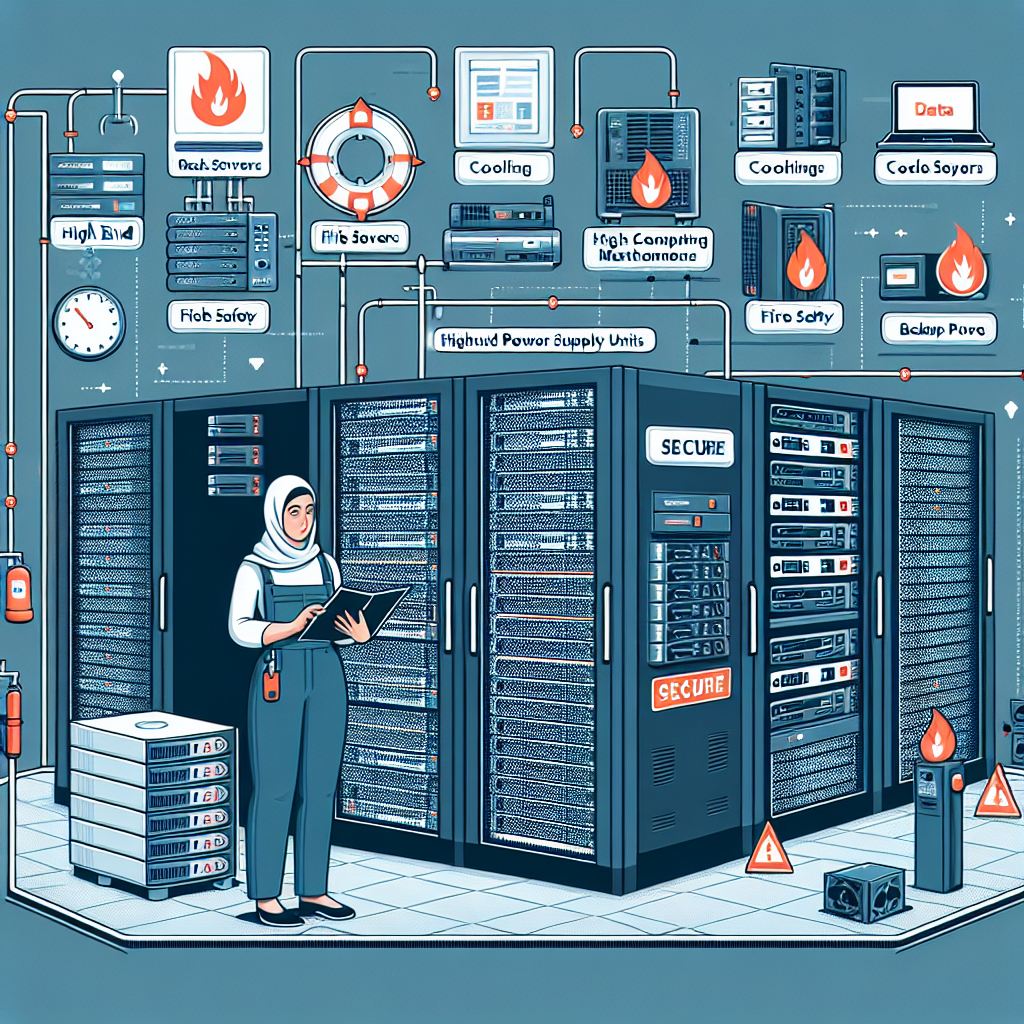
Best Practices for Managing Data Center Risks
In today’s technology-driven world, data centers play a crucial role in storing and managing an organization’s most valuable assets – its data. With the increasing amount of sensitive information being stored in data centers, it is important for organizations to implement best practices for managing data center risks to ensure the security and integrity of their data.One of the key best practices for managing data center risks is conducting regular risk assessments. By identifying potential threats and vulnerabilities, organizations can proactively address any security gaps and minimize the likelihood of a data breach. This includes evaluating physical security measures, such as access control systems and surveillance cameras, as well as implementing cybersecurity protocols to protect against malicious attacks.
Another important best practice is implementing a robust disaster recovery plan. In the event of a natural disaster, power outage, or cyber attack, organizations must have a plan in place to quickly restore operations and minimize downtime. This includes regularly backing up data, testing recovery procedures, and ensuring that critical systems are redundant and resilient.
Additionally, organizations should prioritize employee training and awareness when it comes to data center security. Human error is often a leading cause of data breaches, so it is essential to educate employees on best practices for data security, such as using strong passwords, encrypting sensitive data, and being cautious of phishing attempts.
Furthermore, organizations should regularly monitor and audit their data center infrastructure to identify any potential risks or vulnerabilities. This includes conducting regular security assessments, penetration testing, and vulnerability scans to ensure that systems are up to date and secure.
Finally, organizations should consider implementing a multi-layered approach to data center security. This includes using a combination of physical security measures, such as biometric access controls and security cameras, as well as cybersecurity measures, such as firewalls, intrusion detection systems, and encryption.
By following these best practices for managing data center risks, organizations can better protect their valuable data and ensure the continuity of their operations. It is essential for organizations to stay vigilant and proactive in addressing potential risks and vulnerabilities to safeguard their data and maintain the trust of their customers.

Mitigating Risks and Enhancing Security with Data Center Audits
Data centers play a crucial role in storing and processing vast amounts of data for organizations. With the increasing reliance on technology and data, ensuring the security and integrity of data centers is more important than ever. One way to mitigate risks and enhance security in data centers is through regular audits.Data center audits involve a comprehensive review of the physical, technical, and operational aspects of a data center to identify vulnerabilities and ensure compliance with security standards and best practices. These audits help organizations to assess the effectiveness of their security measures, detect potential threats, and implement necessary improvements to enhance the overall security posture of their data centers.
One of the key benefits of data center audits is the identification of security gaps and vulnerabilities that may be exploited by cybercriminals. By conducting regular audits, organizations can proactively address security issues before they lead to a data breach or other security incidents. This can help prevent costly downtime, data loss, and reputational damage that can result from a security breach.
In addition to identifying security vulnerabilities, data center audits also help organizations ensure compliance with industry regulations and standards. Many industries have specific requirements for data security and privacy, such as the Health Insurance Portability and Accountability Act (HIPAA) for healthcare organizations or the Payment Card Industry Data Security Standard (PCI DSS) for companies that process credit card payments. By conducting audits, organizations can demonstrate their compliance with these regulations and avoid potential fines and penalties for non-compliance.
Furthermore, data center audits can help organizations improve operational efficiency and reduce costs by identifying opportunities for optimization and consolidation. By assessing the physical infrastructure, power and cooling systems, and network configurations, organizations can identify areas where resources are being underutilized or where improvements can be made to increase efficiency and reduce operational expenses.
Overall, data center audits are an essential component of a comprehensive security strategy for organizations that rely on data centers to store and process sensitive information. By conducting regular audits, organizations can mitigate risks, enhance security, and ensure compliance with regulations, ultimately protecting their data and reputation from potential security threats.
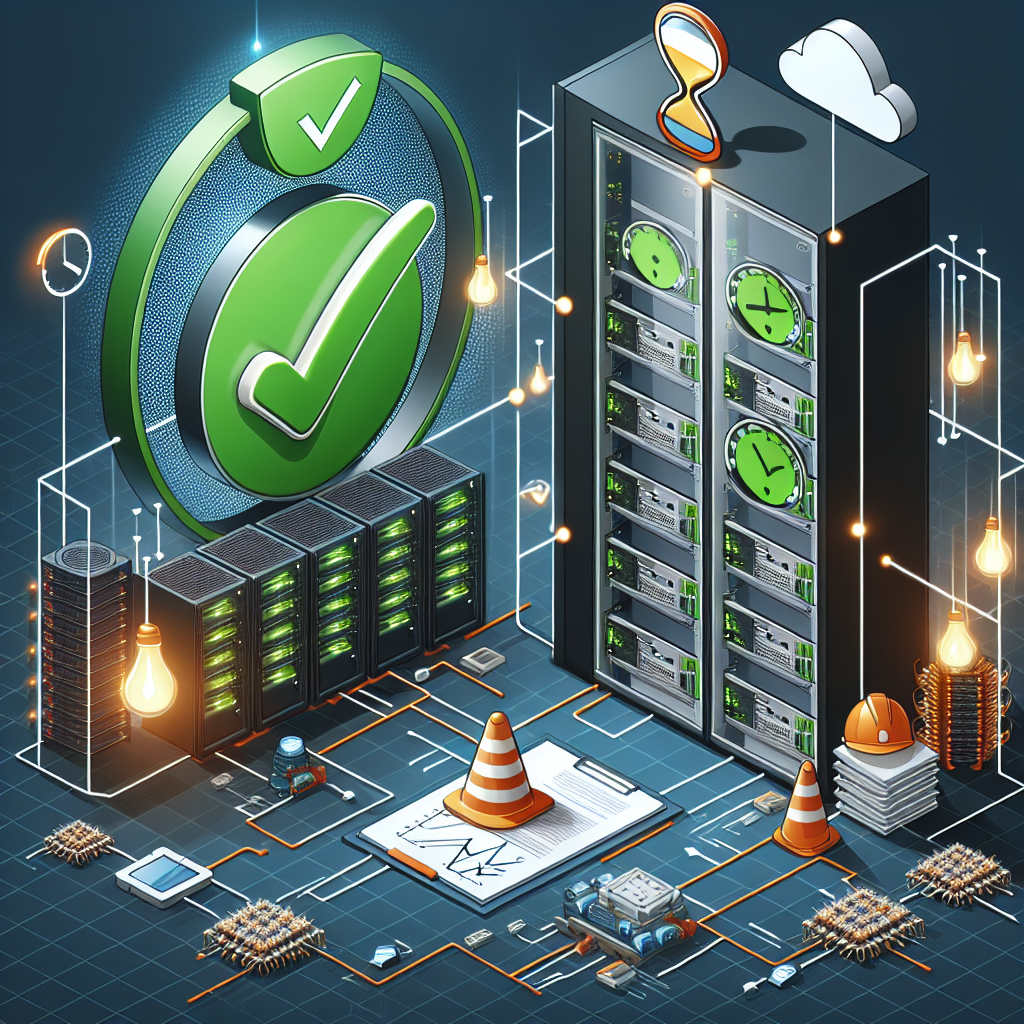
Mitigating Risks: How Data Center MTBF Impacts Disaster Recovery Plans
In today’s digital age, data centers play a crucial role in storing and managing vast amounts of information for businesses and organizations. With the increasing reliance on technology, it is essential for data centers to have robust disaster recovery plans in place to ensure business continuity in the event of a disruption.One key factor that can impact the effectiveness of a disaster recovery plan is the Mean Time Between Failures (MTBF) of a data center. MTBF is a measure of the reliability of a system and is calculated as the average time between failures. The higher the MTBF, the more reliable the system is considered to be.
A data center with a high MTBF is less likely to experience frequent failures, which can lead to downtime and data loss. This is critical for disaster recovery plans, as any interruption in data center operations can have a significant impact on business operations.
By mitigating risks associated with data center failures, businesses can ensure that their disaster recovery plans are effective and can be executed successfully in the event of a disaster. Here are some ways in which data center MTBF can impact disaster recovery plans:
1. Improved reliability: A data center with a high MTBF is more reliable and less likely to experience unexpected failures. This means that businesses can have confidence in their data center operations and rely on them for critical functions during a disaster.
2. Reduced downtime: Downtime can be costly for businesses, both in terms of lost revenue and damage to reputation. A data center with a high MTBF can help reduce downtime by minimizing the frequency of failures and ensuring that systems are up and running when needed.
3. Data protection: Data loss can have severe consequences for businesses, particularly in industries that rely heavily on data for operations. A data center with a high MTBF can help protect data and prevent loss in the event of a disaster, ensuring that business-critical information is preserved.
4. Faster recovery: In the event of a disaster, a data center with a high MTBF can help expedite the recovery process by minimizing the impact of failures and ensuring that systems are quickly restored to full functionality. This can help businesses resume operations more quickly and minimize the overall impact of the disaster.
In conclusion, data center MTBF plays a crucial role in mitigating risks and ensuring the effectiveness of disaster recovery plans. By investing in a reliable data center infrastructure with a high MTBF, businesses can protect their data, reduce downtime, and recover more quickly from disasters. This can ultimately help businesses maintain continuity and safeguard their operations in an increasingly digital and interconnected world.
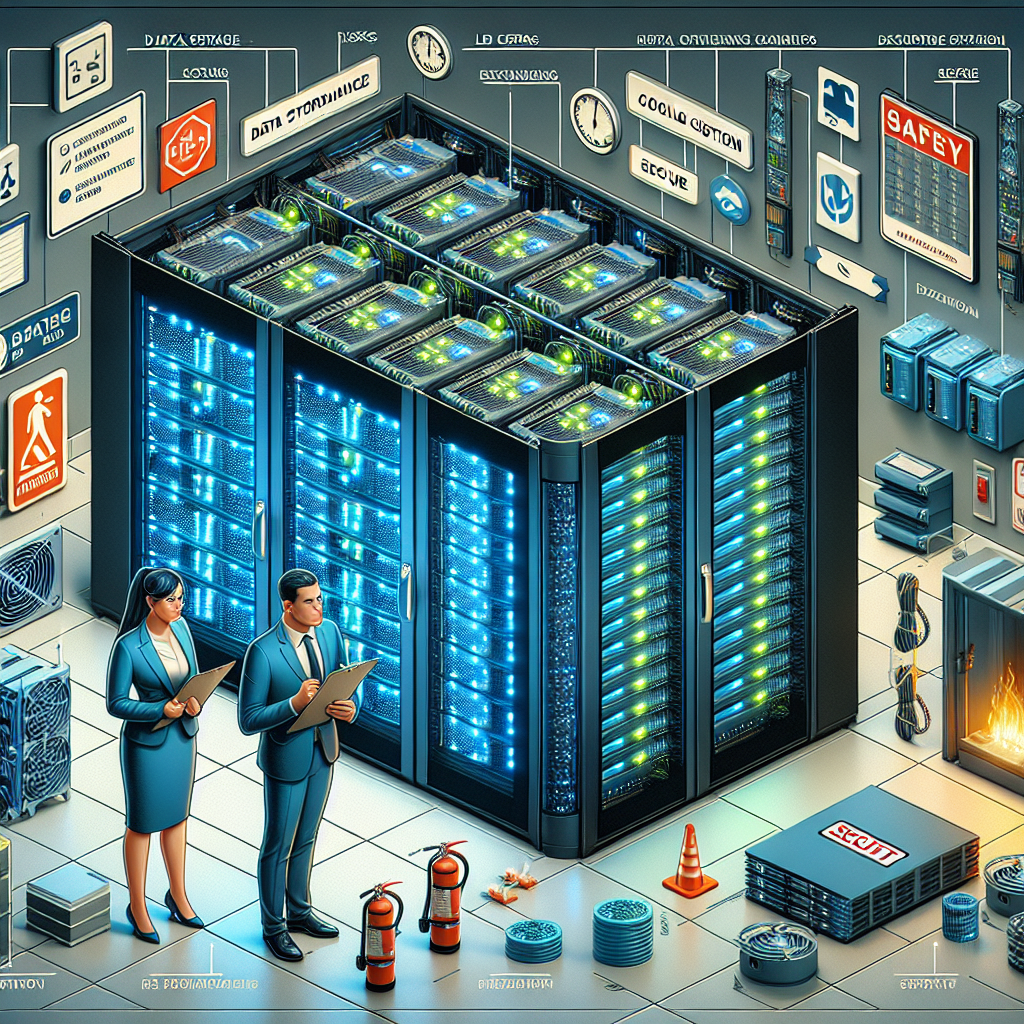
Mitigating Data Center Risks: A Step-by-Step Guide
As data centers become increasingly critical to businesses of all sizes, it’s essential to have a plan in place to mitigate risks and ensure the continued operation of these vital facilities. From power outages to cyber attacks, there are numerous potential threats that can disrupt the operation of a data center. To help protect your data center and minimize potential risks, follow this step-by-step guide.Step 1: Identify Potential Risks
The first step in mitigating data center risks is to identify and assess potential threats. This includes both external threats, such as natural disasters and cyber attacks, as well as internal risks, such as equipment failures and human error. Conduct a thorough risk assessment to determine the likelihood and potential impact of each risk on your data center.
Step 2: Implement Security Measures
To protect your data center from external threats, implement robust security measures. This may include physical security measures, such as access controls and surveillance cameras, as well as cybersecurity measures, such as firewalls and encryption. Regularly update and patch software to address vulnerabilities and minimize the risk of cyber attacks.
Step 3: Implement Redundancy
To mitigate the risk of equipment failures, implement redundancy in critical systems. This may include redundant power supplies, backup generators, and redundant network connections. By ensuring that critical systems have redundant components, you can minimize the risk of downtime due to hardware failures.
Step 4: Develop a Disaster Recovery Plan
In the event of a natural disaster or other major disruption, having a comprehensive disaster recovery plan in place is essential. This plan should outline the steps to take in the event of a data center outage, including how to restore operations and recover data. Regularly test and update the disaster recovery plan to ensure its effectiveness.
Step 5: Monitor and Maintain Systems
Regular monitoring and maintenance of data center systems are essential to identifying and addressing potential risks before they escalate. Implement monitoring tools to track the performance of critical systems and address any issues promptly. Regularly maintain and update hardware and software to ensure optimal performance and minimize the risk of failures.
By following these steps and implementing a comprehensive risk mitigation strategy, you can protect your data center from potential threats and ensure the continued operation of this critical facility. Prioritize security measures, implement redundancy in critical systems, develop a disaster recovery plan, and regularly monitor and maintain systems to minimize risks and ensure the reliability of your data center.
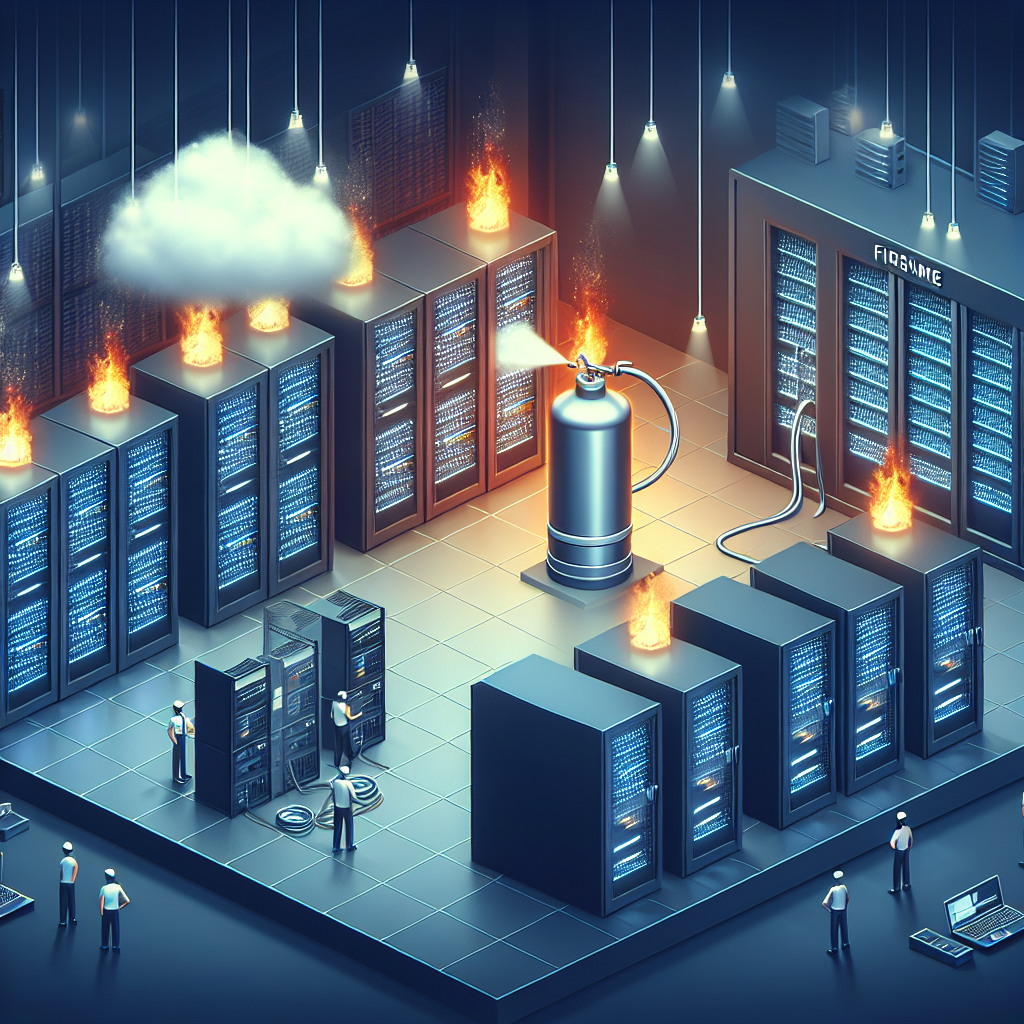
Understanding the Risks of Data Center Fires and How to Prevent Them
Data centers are essential to the functioning of businesses and organizations in the digital age. They house a vast amount of critical data and infrastructure that is crucial for daily operations. However, data centers are also at risk of fires, which can have devastating consequences if not properly prevented and managed.Understanding the risks associated with data center fires is key to ensuring the safety and security of both the data center itself and the information it houses. There are several common causes of data center fires, including electrical malfunctions, overheating equipment, human error, and even natural disasters. It is important to be aware of these risks and take steps to prevent them from occurring.
One of the most effective ways to prevent data center fires is to properly maintain the equipment and infrastructure within the facility. This includes regular inspections, testing, and maintenance of electrical systems, cooling systems, and other critical components. It is also important to ensure that the data center is equipped with adequate fire detection and suppression systems, such as smoke detectors, fire alarms, and fire extinguishers.
In addition to proper maintenance and fire detection systems, it is also crucial to have a comprehensive fire prevention plan in place. This plan should outline the steps to be taken in the event of a fire, including evacuation procedures, emergency contacts, and protocols for contacting emergency services. Regular fire drills and training sessions can help ensure that all staff members are prepared to respond quickly and effectively in the event of a fire.
While preventing data center fires is essential, it is also important to have a plan in place for managing and containing fires if they do occur. This may involve isolating the affected area, shutting down equipment, and activating fire suppression systems to prevent the spread of the fire. It is also important to have backup systems and redundant data storage in place to minimize the impact of a fire on critical data and operations.
In conclusion, understanding the risks of data center fires and taking proactive steps to prevent them is essential for ensuring the safety and security of critical data and infrastructure. By maintaining equipment, implementing fire detection systems, and having a comprehensive fire prevention plan in place, data center operators can help minimize the risk of fires and protect their valuable assets. It is important for businesses and organizations to prioritize fire safety in their data center operations to prevent potentially catastrophic consequences.
